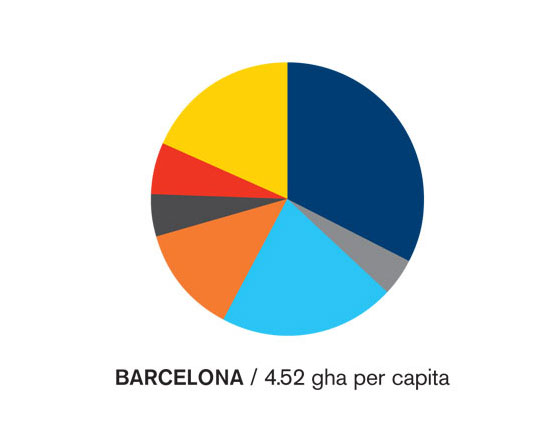Ecological Footprint
The Ecological Footprint is the only metric that measures how much nature we have and how much nature we use. The Footprint helps:Countries
improve sustainability and well-beingLocal Leaders
optimize public project investmentsIndividuals
understand their impact on the planetHow the Footprint Works
Ecological Footprint accounting measures the demand on and supply of nature.
On the demand side, the Ecological Footprint adds up all the biologically productive areas for which a population, a person or a product competes. It measures the ecological assets that a given population or product requires to produce the natural resources it consumes (including plant-based food and fiber products, livestock and fish products, timber and other forest products, space for urban infrastructure) and to absorb its waste, especially carbon emissions.
The Ecological Footprint tracks the use of productive surface areas. Typically these areas are: cropland, grazing land, fishing grounds, built-up land, forest area, and carbon demand on land.
On the supply side, a city, state or nation’s biocapacity represents the productivity of its ecological assets (including cropland, grazing land, forest land, fishing grounds, and built-up land). These areas, especially if left unharvested, can also serve to absorb the waste we generate, especially our carbon emissions from burning fossil fuel.
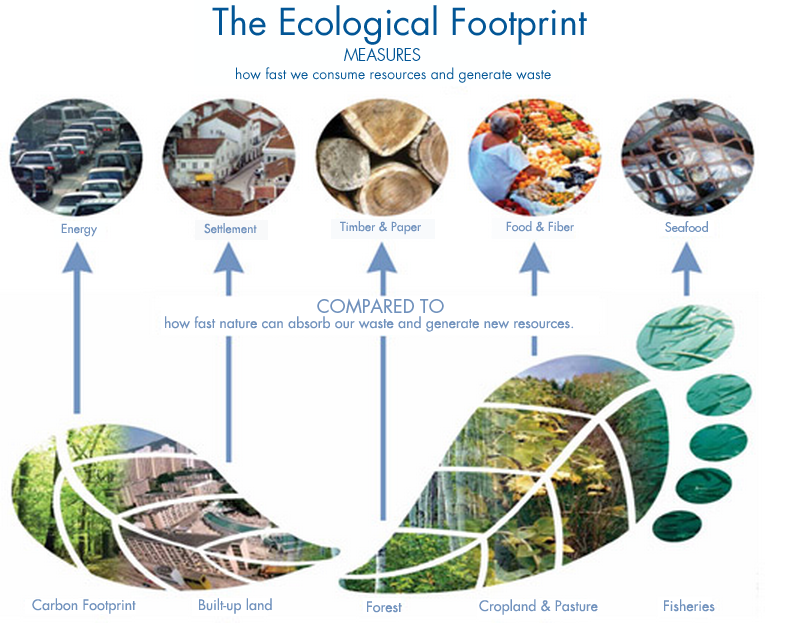
Both the Ecological Footprint and biocapacity are expressed in global hectares—globally comparable hectares with world average productivity.
Each city, state or nation’s Ecological Footprint can be compared to its biocapacity, or that of the world.
If a population’s Ecological Footprint exceeds the region’s biocapacity, that region runs a biocapacity deficit. Its demand for the goods and services that its land and seas can provide—fruits and vegetables, meat, fish, wood, cotton for clothing, and carbon dioxide absorption—exceeds what the region’s ecosystems can regenerate. In more popular communications, we also call this “an ecological deficit.” A region in ecological deficit meets demand by importing, liquidating its own ecological assets (such as overfishing or deforestation), and/or emitting carbon dioxide into the atmosphere. If a region’s biocapacity exceeds its Ecological Footprint, it has a biocapacity reserve.
Conceived in 1990 by Mathis Wackernagel and William Rees at the University of British Columbia, the Ecological Footprint launched the broader Footprint movement, including the carbon Footprint, and is now widely used by scientists, businesses, governments, individuals, and institutions working to monitor ecological resource use and advance sustainable development. The most prominent calculations are those produced for countries. We call those the National Footprint and Biocapacity Accounts. Since 2019, these accounts are owned and governed by a dedicated organization (www.FoDaFo.org) with York University maintaining and updating those accounts.
A rich and accessible introduction to the theory and practice of the approach is available in the book Ecological Footprint: Managing Our Biocapacity Budget (2019). The European Commission provides a short summary here. Fuller methodological explanations and applications to national policy are provided in a Nature Sustainability paper (2021) and two MDPI papers, one on the national accounts method, and the other one on its implications.
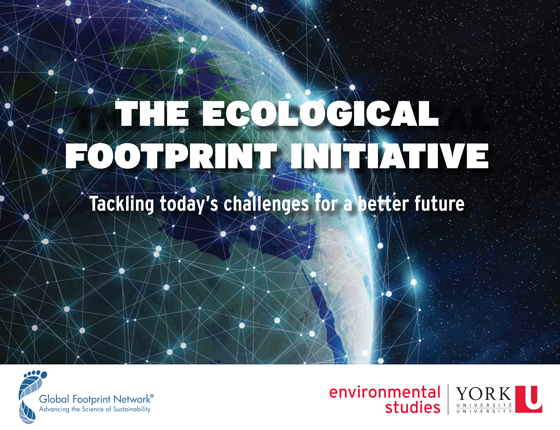
National Footprint and Biocapacity Accounts
Together with York University, Toronto, Global Footprint Network has established an independent organization: Footprint Data Foundation (FoDaFo). This organization’s purpose is to be the steward of the National Footprint and Biocapacity Accounts. FoDaFo independently owns and directs the production of the Accounts, with the goal to provide them with highest reliability, so they can inform public and private decision-making in an unbiased way. For the maintenance of the accounts, York University is providing the academic support. FoDaFo also has the ambition to build a coalition of countries, supported by a rigorous global academic network, to advance its work.
Ecological Balance Sheets
Global Footprint Network’s National Footprint and Biocapacity Accounts provide a comprehensive way to understand the competing demands on our planet’s ecosystems. This 2.5 minute video explains how.
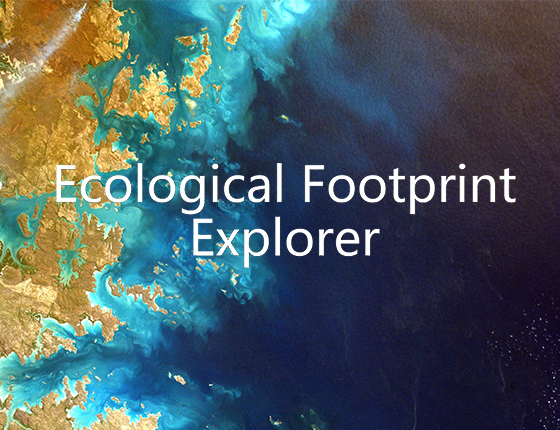
Is your country running an ecological deficit?
Today, more than 80 percent of the world’s population lives in countries that are running ecological deficits, using more resources than what their ecosystems can regenerate. How does your country compare? Visit our Ecological Footprint Explorer open data platform to find the answer.
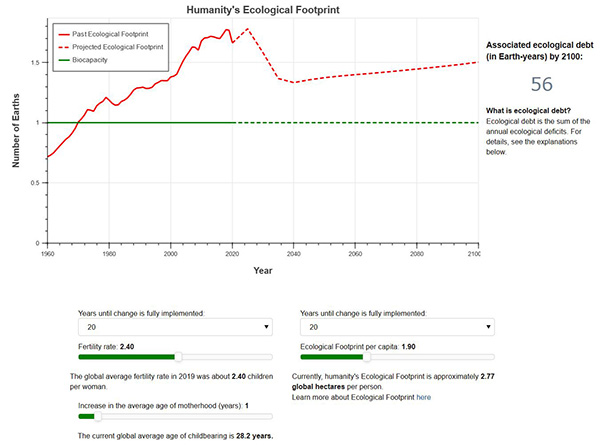
Design Possible Futures
Use our global Footprint scenario tool to design possible futures for humanity. Explore different scenarios by choosing key parameters that shape overshoot: the size of humanity’s Ecological Footprint, how many of us there are on the planet, and how quickly changes in consumption and family size are implemented. The tool then displays how your choices would affect humanity’s trajectory.
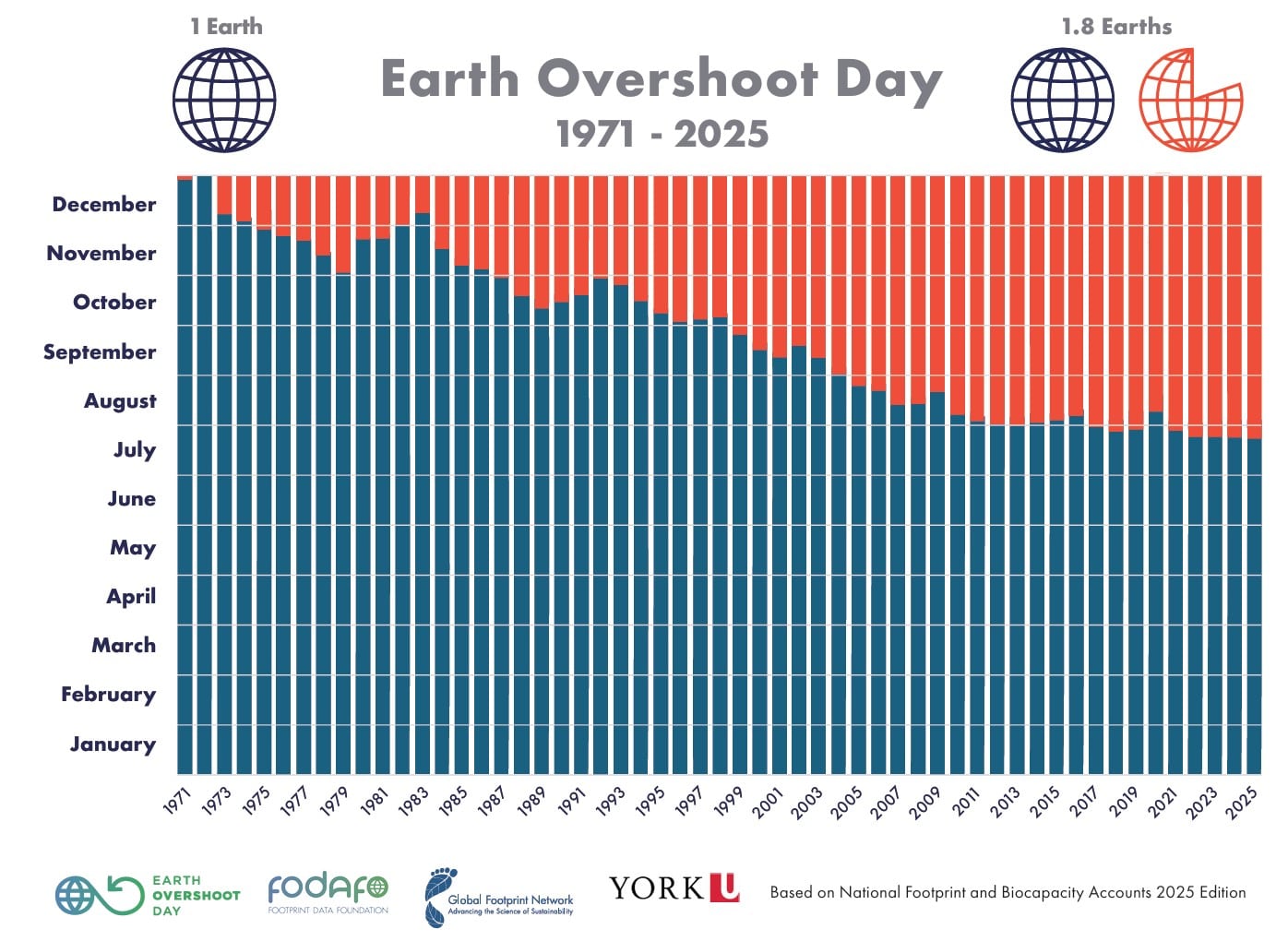
Overshoot Day
Every year Global Footprint Network puts the spotlight on global ecological overshoot by marking Earth Overshoot Day. Our campaign, which attracts media attention around the world, highlights how human overdemand drives all the main environmental challenges, from climate change to biodiversity loss and food insecurity. Earth Overshoot Day is the date in that year humanity has used more from nature than our planet can regenerate in that same, entire year. Earth Overshoot Day has moved from mid September in 2000 to July 24 in 2025.
By making ecological limits central to our decision-making, human ingenuity can find new ways for all to thrive, within the Earth’s bounds. This means investing in technology and infrastructure that will allow us to operate in the predictable future of climate change and resource constraints. It highlights that for anybody, whether a household, company, city, or country, not preparing themselves for that future, undermines their own opportunities.
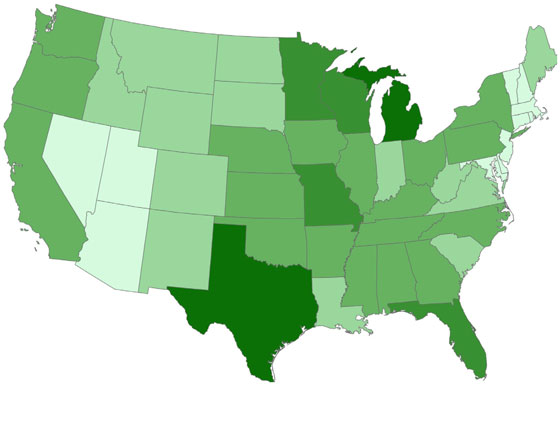
Country Work
Each country has its own ecological risk profile: The majority of countries are running ecological deficits, demanding more from nature than their ecosystems can regenerate. Others depend heavily on resources from elsewhere, which are under increasing pressure. The Ecological Footprint is a resource accounting tool that helps countries manage their ecological resources and secure their future.



